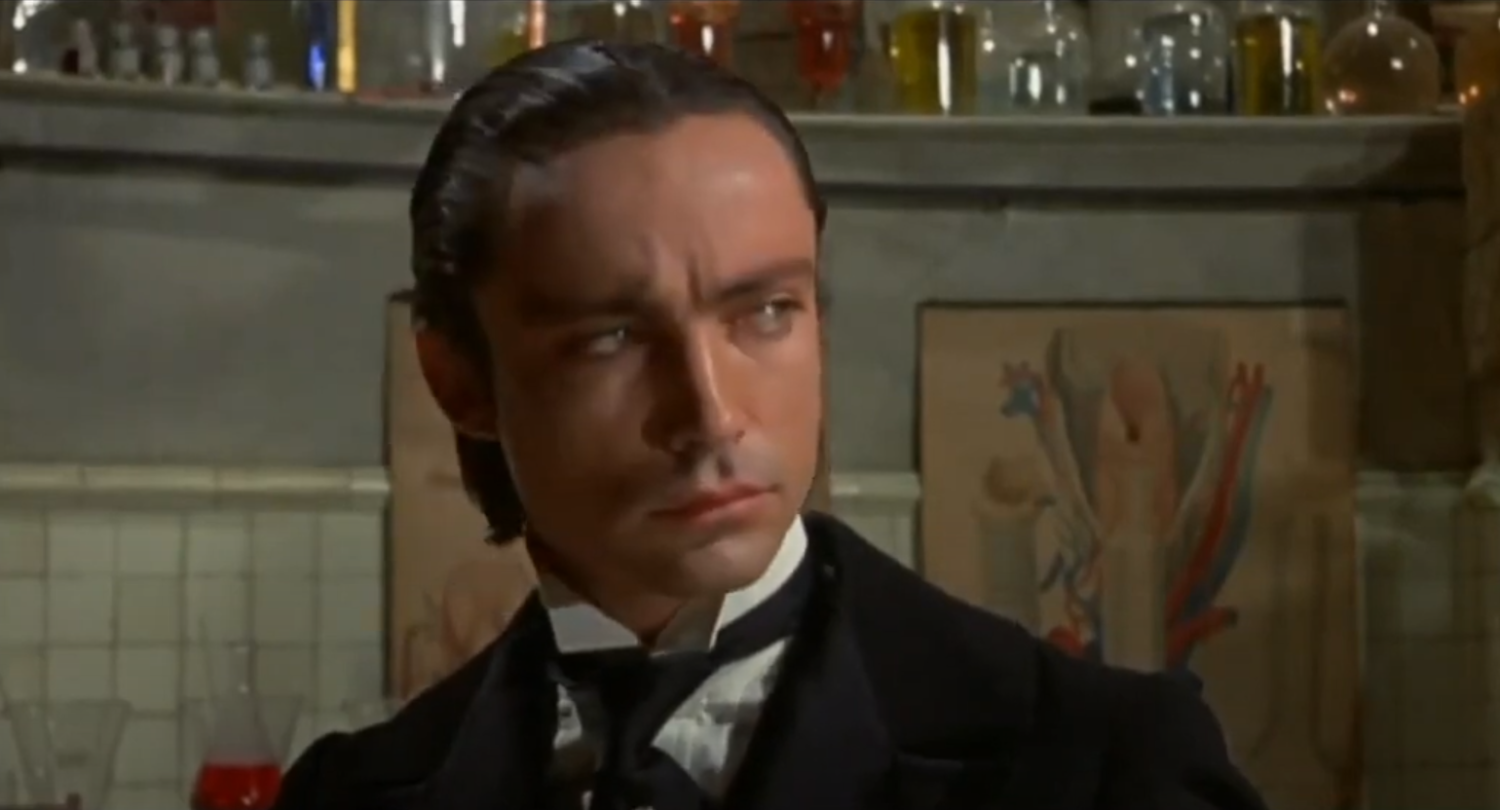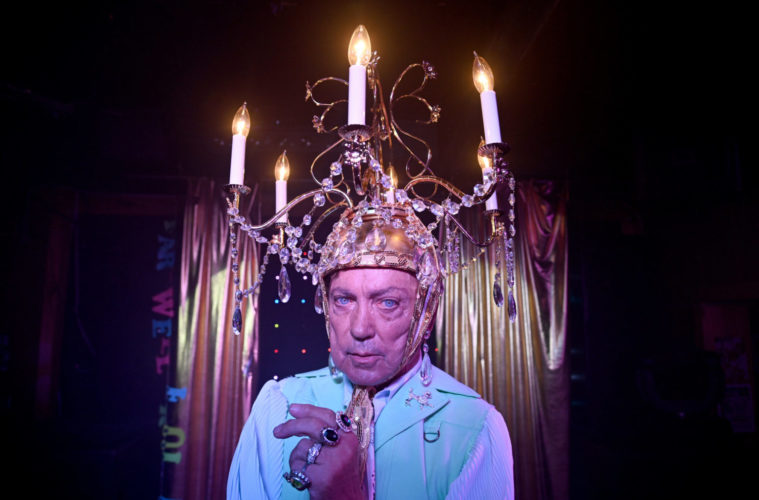“This is not my swan song,” insists iconic character actor Udo Kier, chatting by phone about what many are calling the best performance of his career– playing a flamboyant hairdresser in Todd Stephens’ sublime indie portrait called Swan Song. “Also they are saying ‘comeback,’ but in my case it’s wrong because I never went away. “
Even so, Kier –who starts our interview telling us that he graced the cover of LA Weekly decades ago for a special German Fashion issue (he was interviewed by performance artist and former Weekly staffer Ron Athey)– finds himself a hot commodity again thanks to the role. The former Echo Park/current Palm Springs resident obviously stays very aware of the media and the buzz from his latest role (playing real life hairdresser “Mr.” Pat, a local legend and queer figure in Stephens’ hometown of Sandusky, Ohio) is no exception. Though he has a mind-blowing volume and variation of films on his resume, Kier hopes the attention might even help him transcend the quirky supporting roles that have been his bread and butter for over 5 decades.

(Courtesy Magnolia Pictures)
“The critics are saying ‘after 50 years Udo Kier is finally the leading man,’” he boasts, his alluring German accent infusing his thoughts with an endearing and well-earned arrogance. “So now journalists like you make me want to look only for leading parts. If you all think Swan Song is my best role and it’s a leading man part, then that’s what I want and what I need more of now. I cannot disappoint the critics!”
Kier did get his start as a leading man after all, first in Germany, then in the U.S. The actor’s piercing blue eyes and ominous charisma made him a standout from the start, from his early starring role as the mad doctor in Andy Warhol’s Frankenstein to the collection of horror cult classics that followed (Blood for Dracula, Suspiria). He went on to appear in countless acclaimed films from there, from auteur classics such as Gus Van Zantz’s My Own Private Idaho to pretty much everything Danish director Lars von Trier has made, to mainstream hits such as Ace Ventura Pet Detective, Blade and Armageddon.
He’s a great villain and a provocative pan-sexual presence (Madonna cast him in both her infamous SEX book and the video for her Erotica single “Deeper and Deeper”), but the subtlety and sadness he conveys in Swan Song is relatively new for him and lead billing or no, it’s something he’d be smart to tap into again. His celebrated gaze, now older, is also wiser, and it conveys so much in this film– loss, pain and contemplation of past and present. Kier says this was no accident and his immersive approach to the role made all the difference.
“When I started shooting I said I would love to shoot chronological if possible, so we did the retirement home first,” he explains of the somber opening scene and what follows. “I said I would like a day or two on my own in there, before the cameras come in, so I could get used to all the details of the room and looking out of the window for an hour, and things like that.”
The small crew filmed in Sandusky, on the very streets where Mr. Pat primped the local ladies until his death. “It’s a little town and there is one street and it ends by the water,” Kier recalls. “And everything on that street was the set; there was the second hand store where I got my green suit and then there was the place where I was on stage across the street. And the club where I dance with a chandelier on my head to the song, ‘I’m in the corner watching you kiss her.’” The club scene soundtracked to Robyn’s “Dancing on my Own,” is pretty irresistible, but Kier says that his favorite might be, “when I’m in the hospital and I steal the little car, wearing the green suit with all the cars behind me, and the music is, “My Way.”
“I relied on the people who told me about him [Mr. Pat], but also thought about the character of somebody whose friend died,” he continues. “This was a human situation that an older man can understand. I’m 76 but I was 74 when I made the movie. Today people take one pill against AIDS and they are undetectable. When I grew up in Germany people just died from it. So I reflected myself to that time. That may be why my eyes in the film from time to time are very sad. I didn’t say to myself, ‘now you have to sad.’ It was just the situation. I found myself in the story. Sometimes it was sad and sometimes it was funny. And once I got the green suit on, I wore it til I died.”
The green polyester woman’s leisure suit is obviously significant to Kier as he mentions it a few times during our chat. Mr. Pat’s feminine attire is in fact, a big visual component of the film (there’s a very pretty ladies hat as well) and it’s clearly a thematic nod to the storyline, which explores how things have changed for the LGTBQ community, even in small towns. We learn that Mr. Pat’s partner died from HIV, and due to the laws of the time, he lost his house and ultimately his salon business. His top client and friend (played by Linda Evans) left him and his protege (played by Jennifer Coolidge) betrayed him by opening a competing salon across the street from his once busy beauty parlor.

Kier in Andy Warhol’s Frankenstein (Public Domain/Wiki Commons)
It’s a simple story and the film as a whole is pretty lowkey, even as it explores a flamboyant subject. Kier’s nuanced portrayal is deserving of every accolade, especially since he’s anything but subtle in real life. Reminiscing about Warhol and how working with him changed his life (“I moved from the regular newspaper to the glamour papers”) he admits that out of 250 or so films he’s made, some were memorable and some were not. “I always say that maybe 50 are bad and 50 you can have with some alcohol and be amused, and you know, there’s a lot of good ones too,” says the actor, who was most recently seen in the acclaimed The Painted Bird and will be part of Amazon’s Hunters season 2 cast.
“With the pandemic, people want to go to the movies and they want to have tears in their eyes and they want to laugh and they want to love!” Kier answers when we ask why he thinks the movie is resonating with film-goers, but it’s more than that and throughout our conversation, he’s not shy about saying so. “All the big movies, I always had supporting parts and people might have said, ‘yeah he was good in that.’ But in this film I’m on screen from beginning til the end!”
Kier’s performance –and really, his entire career- has earned him the right to bask in this moment. Here’s hoping that Swan Song is indeed, anything but for him.
Advertising disclosure: We may receive compensation for some of the links in our stories. Thank you for supporting LA Weekly and our advertisers.

